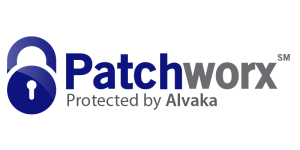How to Harden Active Directory Against Ransomware Attacks
Understanding the Threat: The Rise of Ransomware in Active Directory Environments
Active Directory ransomware hardening has become a critical concern for organizations around the globe. As ransomware attacks escalate in both frequency and severity, their impact on Active Directory environments poses substantial risks to our business operations and data security. Ransomware, a type of malicious software designed to block access to a computer system until a sum of money is paid, has been increasingly targeting Active Directory due to its centrality in network management and the valuable information it holds.
The Importance of Active Directory Ransomware Hardening for Business Security
Active Directory serves as the backbone of IT infrastructure in many organizations, controlling access to critical resources and managing user identities. This makes it a prime target for ransomware attacks. A successful breach could grant attackers in-depth access to our network, allowing them to disrupt services and exfiltrate or encrypt sensitive data. As defenders, we must recognize that Active Directory ransomware hardening is not just an IT issue but a vital part of our overall business security strategy.
Analyzing Vulnerabilities: The First Step Toward Active Directory Ransomware Hardening
Our initial step in fortifying against ransomware attacks is a comprehensive analysis of our current vulnerabilities. This involves a thorough audit of our Active Directory configuration, identifying areas where our defenses could be reinforced. By understanding our weaknesses, we can implement targeted measures to bolster our resilience against these threats. Rigorous review and ongoing monitoring form the bedrock of our proactive defense strategy.
Key Strategies for Active Directory Ransomware Hardening
As IT professionals, we recognize the escalating threat of ransomware attacks on Active Directory (AD) environments. Our proactive approach hinges on comprehensive Active Directory ransomware hardening to protect our clients’ business continuity and sensitive data. Let us delve into essential strategies that fortify your network against such threats.
Implementing Least Privilege Access: A Cornerstone of Active Directory Security
At the core of our security measures, we advocate for least privilege access policies. This approach ensures that users receive access rights strictly necessary to perform their job functions. By limiting access rights, we minimize the potential impact of ransomware, making it harder for malicious actors to compromise critical systems and data. Regular audits and adjustments to these access controls maintain a secure and adaptable defense against evolving threats.
Active Directory Disaster Recovery Planning: Preparing for the Worst
An integral part of our strategy involves meticulous Active Directory disaster recovery planning. We acknowledge that even the most fortified environments are not impervious to attacks. Thus, we establish robust recovery protocols that enable rapid restoration of services in the event of a breach. Our disaster recovery plans include:
- Regular and redundant AD backups stored securely off-site.
- Audit trails and monitoring systems that detect and alert on abnormal activities.
- Clear procedures for disaster response that allow swift containment and resolution.
Through a layered defense and proactive planning, we are committed to ensuring that our clients are equipped to handle any disaster scenario with minimal disruption to operations.
Did you know? Implementing least privilege access in Active Directory can significantly mitigate the risk of ransomware by ensuring users have only the necessary permissions to perform their roles.
Strengthening Your Cybersecurity Posture with Active Directory Ransomware Hardening
As threats to network security continue to escalate, the importance of Active Directory ransomware hardening cannot be overstated. We at Alvaka are committed to providing robust defenses for our clients, ensuring their infrastructure is resilient against malicious attacks. By systematically strengthening your Active Directory environment, we lay the groundwork for a secure and stable network. Our meticulous approach guarantees that every precaution is taken to shield your data assets and maintain the continuity of your critical operations.
Best Practices for Ongoing Active Directory Maintenance to Thwart Ransomware
Continual maintenance is vital in safeguarding against ransomware attacks. We believe in a proactive strategy that encompasses regular audits, updates, and patches to keep Active Directory fortified. Our team is dedicated to staying ahead of potential vulnerabilities by analyzing system behavior, enforcing update protocols, and ensuring all security features operate at peak performance. By adopting these best practices, we not only enhance your security but also foster an environment where Active Directory serves as a reliable component in the broader scheme of your network’s defense strategy.
Advocating for a Secure Future: The Role of IT Management in Ransomware Prevention
At Alvaka, we understand that IT management plays a pivotal role in preventing ransomware incidents. Active Directory ransomware hardening is a continuous process that demands knowledgeable oversight and decisive action. It’s our responsibility to advise and guide your business through constantly evolving cyber threats. Our expertise translates into tailor-made strategies that secure your Active Directory infrastructure. Empowerment through education and resource allocation ensures that IT management is not just an operational necessity, but a strategic partner in your journey towards a secure digital future. Let us be the guardians of your cybersecurity, where preparedness meets innovation to create a fortified network ready to face the complexities of today’s threat landscape.
For more information on ransomware recovery and how Alvaka can assist in these challenging situations, reach out to us. Together, we can create a cybersecurity strategy that not only mitigates risks but also aligns with your business objectives, allowing you to focus on growth and innovation with confidence.
FAQ
What is ransomware and why is it a threat to Active Directory environments? ▼
Ransomware is a type of malware that encrypts an organization’s data, rendering it inaccessible until a ransom is paid. It’s particularly threatening to Active Directory (AD) environments because AD is central to network management and security. Once an attacker compromises AD, they can potentially take over the entire network and its resources.
How does Active Directory ransomware hardening improve business security? ▼
By implementing Active Directory ransomware hardening measures, we enhance our cybersecurity posture. This includes reducing vulnerabilities that could be exploited by ransomware, making it significantly more challenging for attackers to compromise our network, and ensuring business continuity and protection of sensitive data.
What are the first steps in hardening Active Directory against ransomware? ▼
The initial step in hardening AD against ransomware involves analyzing and identifying current vulnerabilities. This assessment allows us to address weak points through targeted security enhancements and to develop a robust defense strategy tailored to our specific environment.
Can you outline some key strategies for hardening Active Directory against ransomware? ▼
Certainly, some key strategies include regularly updating and patching AD systems, implementing multi-factor authentication, regularly conducting security audits and penetration testing, as well as ensuring backups are secure and readily available for disaster recovery.
Why is implementing least privilege access crucial for Active Directory security? ▼
Implementing least privilege access ensures that users and programs have only the minimum levels of access necessary to perform their functions. This minimizes the potential damage in the event of a compromise, as attackers have less opportunity to escalate their privileges and move laterally across the network.
What should an Active Directory disaster recovery plan include? ▼
An Active Directory disaster recovery plan should include strategies for backup and restoration of AD data, a clearly defined roles and responsibilities matrix, and a communication plan to ensure a coordinated response during a ransomware attack.
What are some best practices for ongoing Active Directory maintenance to prevent ransomware? ▼
Best practices include routinely reviewing and updating security policies, conducting regular audits for unusual activity, updating systems with the latest security patches, and providing consistent training for IT staff on the latest ransomware threats and trends.
How can IT management advocate for a secure future against ransomware threats? ▼
IT management can advocate for a secure future by prioritizing cybersecurity, seeking executive support for necessary resources, staying informed about emerging threats, and continuously evolving security practices and infrastructure to counter new ransomware tactics.
How often should we perform security audits on our Active Directory? ▼
We should perform security audits on our Active Directory regularly – at least once a quarter – and additionally whenever significant changes are made to the network or new potential threats are identified in the cybersecurity landscape.
What role does employee training play in preventing ransomware? ▼
Employee training is critical in ransomware prevention as human error is often a primary security vulnerability. Regular training can empower our staff to recognize and report potential threats, such as phishing attempts, that could lead to a ransomware infection.








 Smoke testing is a term used to describe the testing process for servers after patches are applied.
Smoke testing is a term used to describe the testing process for servers after patches are applied.  This is a basic cost calculator for you to compute your typical monthly cost for patching your servers, PCs, laptops, tablets and associated application software. It also forms the basis for you to begin calculating your Return on Investment for software patching, or for comparison with alternatives to the manual process of patching operating systems and application software—such as Patch Management as a Service, also known as Vulnerability Management as a Service.
This is a basic cost calculator for you to compute your typical monthly cost for patching your servers, PCs, laptops, tablets and associated application software. It also forms the basis for you to begin calculating your Return on Investment for software patching, or for comparison with alternatives to the manual process of patching operating systems and application software—such as Patch Management as a Service, also known as Vulnerability Management as a Service.